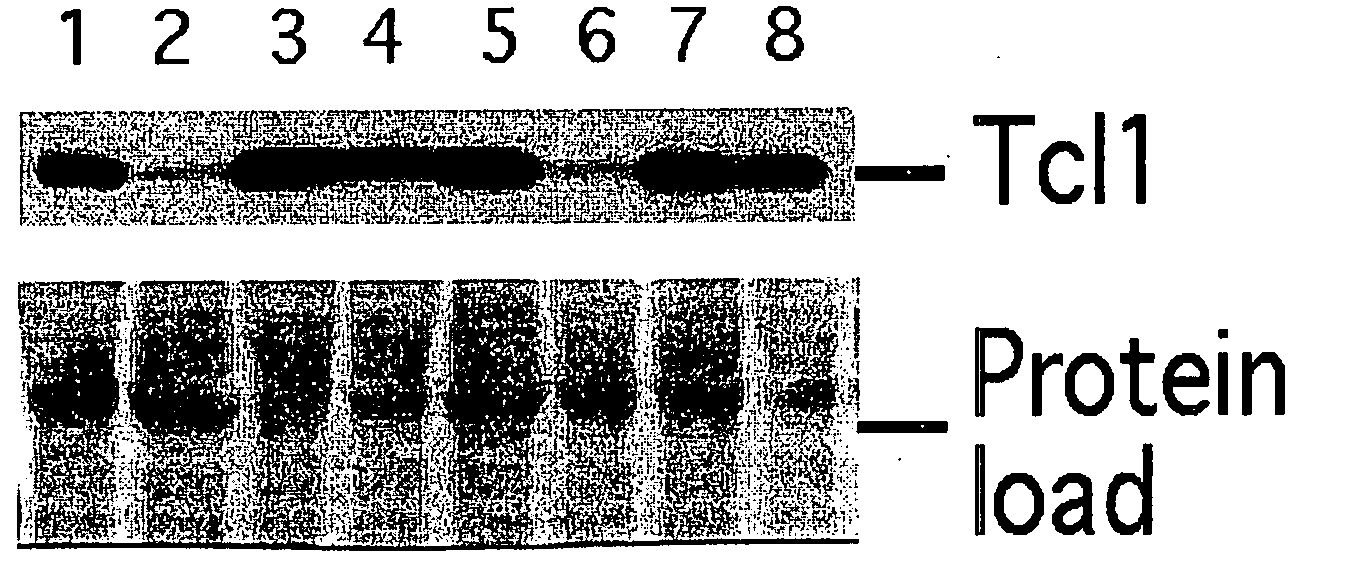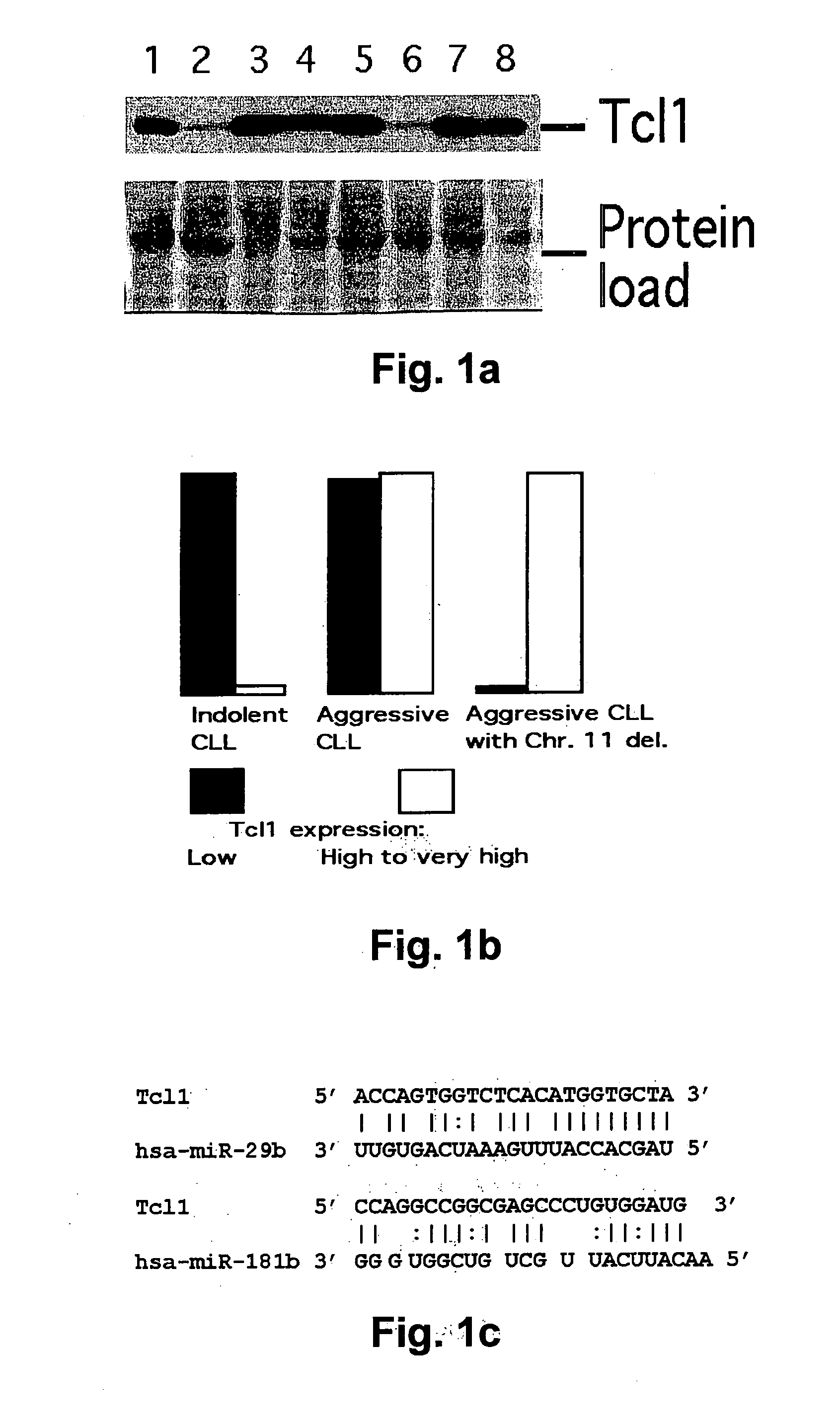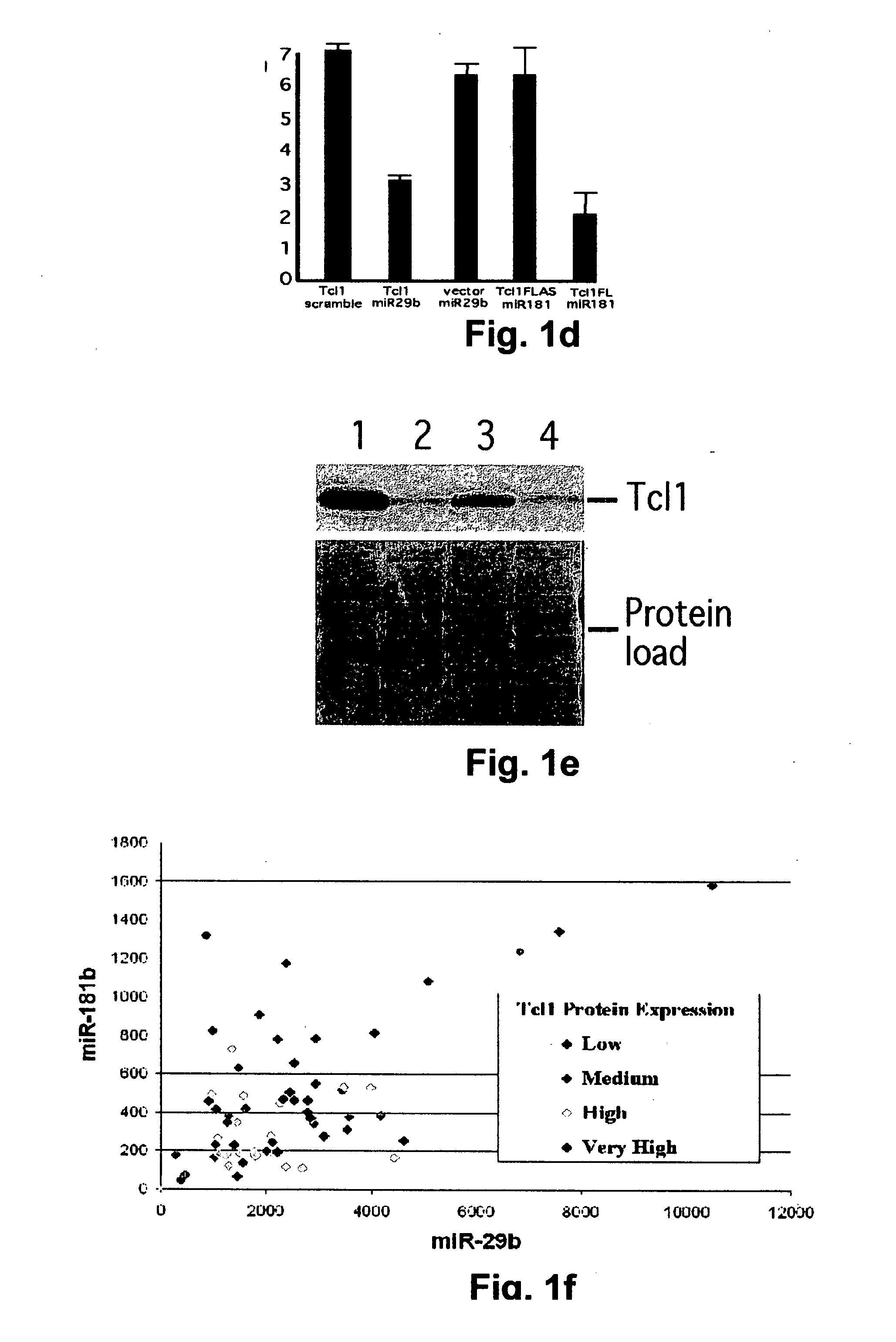TCL1 Expression in Chronic Lymphocytic Leukemia (CLL) Regulated by MIR-29 and MIR-181
- Summary
- Abstract
- Description
- Claims
- Application Information
AI Technical Summary
Benefits of technology
Problems solved by technology
Method used
Image
Examples
examples
[0124]CLL Samples and MicroRNA Microchip Experiments.
[0125]Eighty CLL samples were obtained after informed consent from patients diagnosed with CLL at the CLL Research Consortium institutions. Briefly, blood was obtained from CLL patients, lymphocytes were isolated through Ficoll / Hypaque gradient centrifugation (Amersham, Piscataway, N.J.) and processed for RNA extraction using the standard Trizol method. Protein extraction was carried out as described previously.10 MicroRNA-microchip experiments were performed as previously described.9 Each microRNA microchip contained duplicates probes, corresponding to 326 human and 249 mouse microRNA genes. Statistical analysis was carried out as previously described.11 To identify statistically significant differentially expressed microRNA, class prediction analyses were performed using BRB ArrayTools.
[0126]DNA-Constructs, Transfection, Western Blotting and Luciferase Assay.
[0127]Full length TCL1 cDNA including 5′ and 3′ UTRs cDNA was cloned in...
PUM
| Property | Measurement | Unit |
|---|---|---|
| Fraction | aaaaa | aaaaa |
| Fraction | aaaaa | aaaaa |
| Fraction | aaaaa | aaaaa |
Abstract
Description
Claims
Application Information
 Login to View More
Login to View More - R&D
- Intellectual Property
- Life Sciences
- Materials
- Tech Scout
- Unparalleled Data Quality
- Higher Quality Content
- 60% Fewer Hallucinations
Browse by: Latest US Patents, China's latest patents, Technical Efficacy Thesaurus, Application Domain, Technology Topic, Popular Technical Reports.
© 2025 PatSnap. All rights reserved.Legal|Privacy policy|Modern Slavery Act Transparency Statement|Sitemap|About US| Contact US: help@patsnap.com



